New Zealand‘s journey in the FIFA Women’s World Cup 2023 has ended after a spirited yet scoreless draw with Switzerland in Dunedin on Sunday. Despite New Zealand’s exit from the group stage in FIFA Women’s World Cup 2023, there is light at the end of the tunnel, which is their excellence in set pieces, but unfortunately, their final touches were inaccurate.
New Zealand becomes the first host nation to be knocked out of the Women’s World Cup at the group stage, but we will focus on their abilities to exploit set pieces which is an excellent point to start the correction revolution.
In this tactical analysis, we will explain the tactics of the host team in set pieces, and we will focus more on the attacking set pieces, especially corners and indirect free kicks showing how they were unlucky in finishing, but they have excellent routines.In this set-piece analysis, we will show their use of short corners and targeting the near post in corners, and for free kicks, we will show how they target the far post and also the space in front of the line.
Short corners
Against the Philippines, New Zealand showed their ability to carry out a creative short-corner routine. The clever trick in this routine was that the receiver of the short pass wasn’t the short option player or a rebound player, but the receiver was the player who stood at the back pretending that she was waiting for the counterattack if it happened.
As shown in the first photo, the Philippines defend with a player-marking defending system with only two zonal marking players, highlighted in green. The short-option player, highlighted in yellow, moves more inside to drag her marker with her while the two red players stand at the rebound zone to fix Philippines’ two red players preventing him from chasing the real targeted player who was at the back, out of the shot.
In the second photo, the aim of their using a short-corner routine appears. The Philippines, and most of the player-marking teams, have a problem in reorganising themselves after playing the short corners because they don’t have a clear and unified reference to deal with the short corners, so you can see that the players are confused because they don’t know if they should still stick to their markers or they should reorganise themselves in a high line. The result is that the three green players are covering the offside trap knowing that the attacker on the far post helps to attract their attention, fixing them behind the line.
In the third photo, the two players, highlighted in yellow, run on the far post to be on the blind side of the line exploiting the late three green players. In the fourth photo, the plan works with the two green players on the far post, but she was very unlucky because the headed shot was a little above the crossbar.
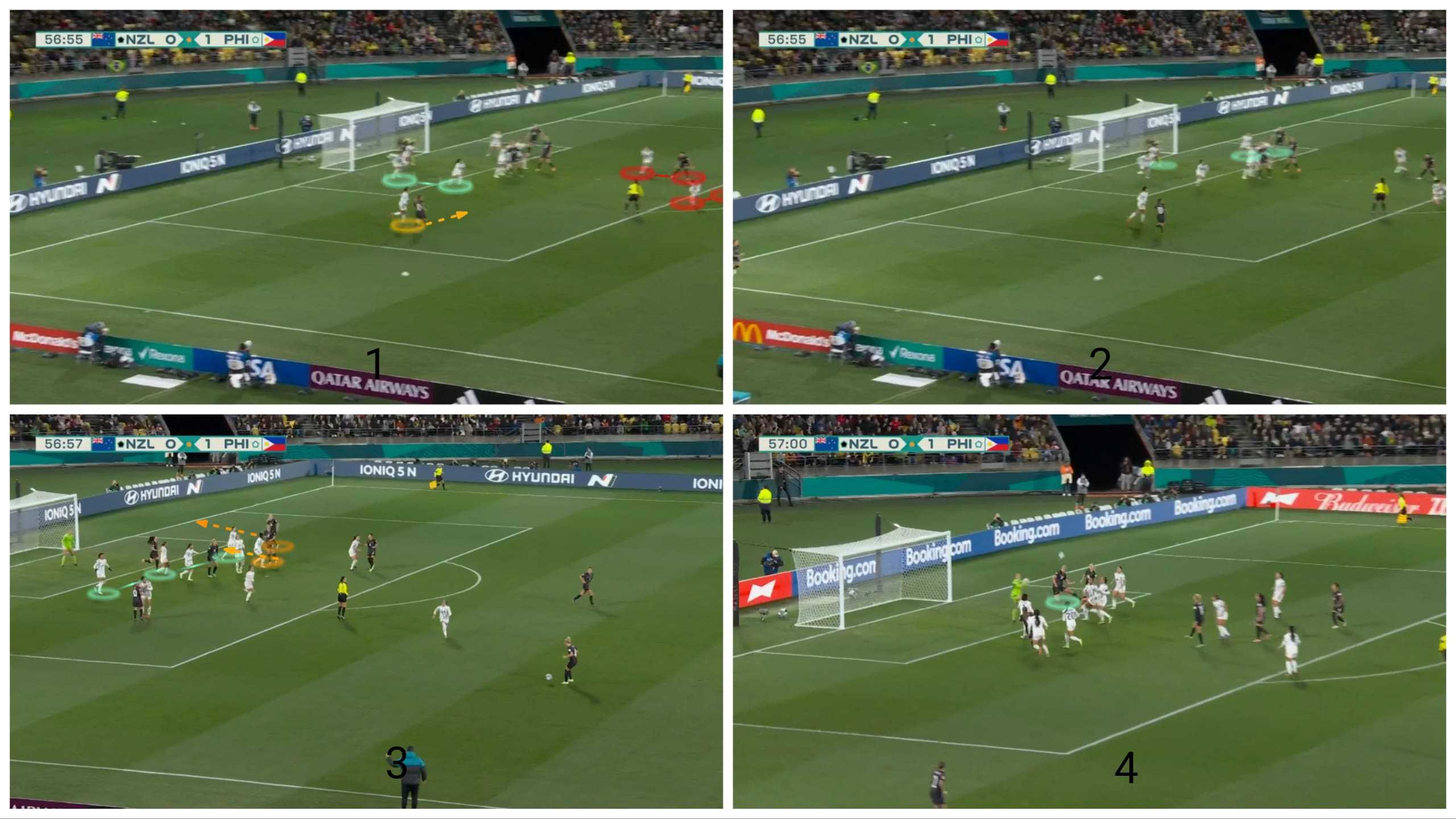
Targeting the near post
Against Switzerland, they also had a different creative routine, but they were also unlucky before the goalkeeper saved the ball at the last second, as we will explain.
In the first photo, Let’s start with the defending scheme of Switzerland. They defend by four players, highlighted in green, in the first-zone line, including the near-post player, a player, in yellow, in front of them in the second-zone line, three player-markers, a player for the short option and a player for the counterattack.
In the second photo, they aim to target the area on the near post in front of the yellow player by the two green players who stand on the far post to come from her blind side, so she would have a problem in orientation that she can’t notice them while looking at the ball in the air at the same time. The problem they face is the two players of Switzerland, in yellow, as we mentioned, and the blue player in front of her, so the role of the two black-arrowed players comes. They start in front of them, then return to attract their attention away from the green attackers.
In the third photo, they start to move back as the taker touches the ball, attracting the two defenders’ attention, as shown in blue and yellow, while the two green attackers target the black area moving from the back of them so they don’t notice them.
In the fourth photo, it is shown that the two attackers have different roles; the blue attacker blocks the goalkeeper while the second, highlighted in green, tracks the ball to hit it.
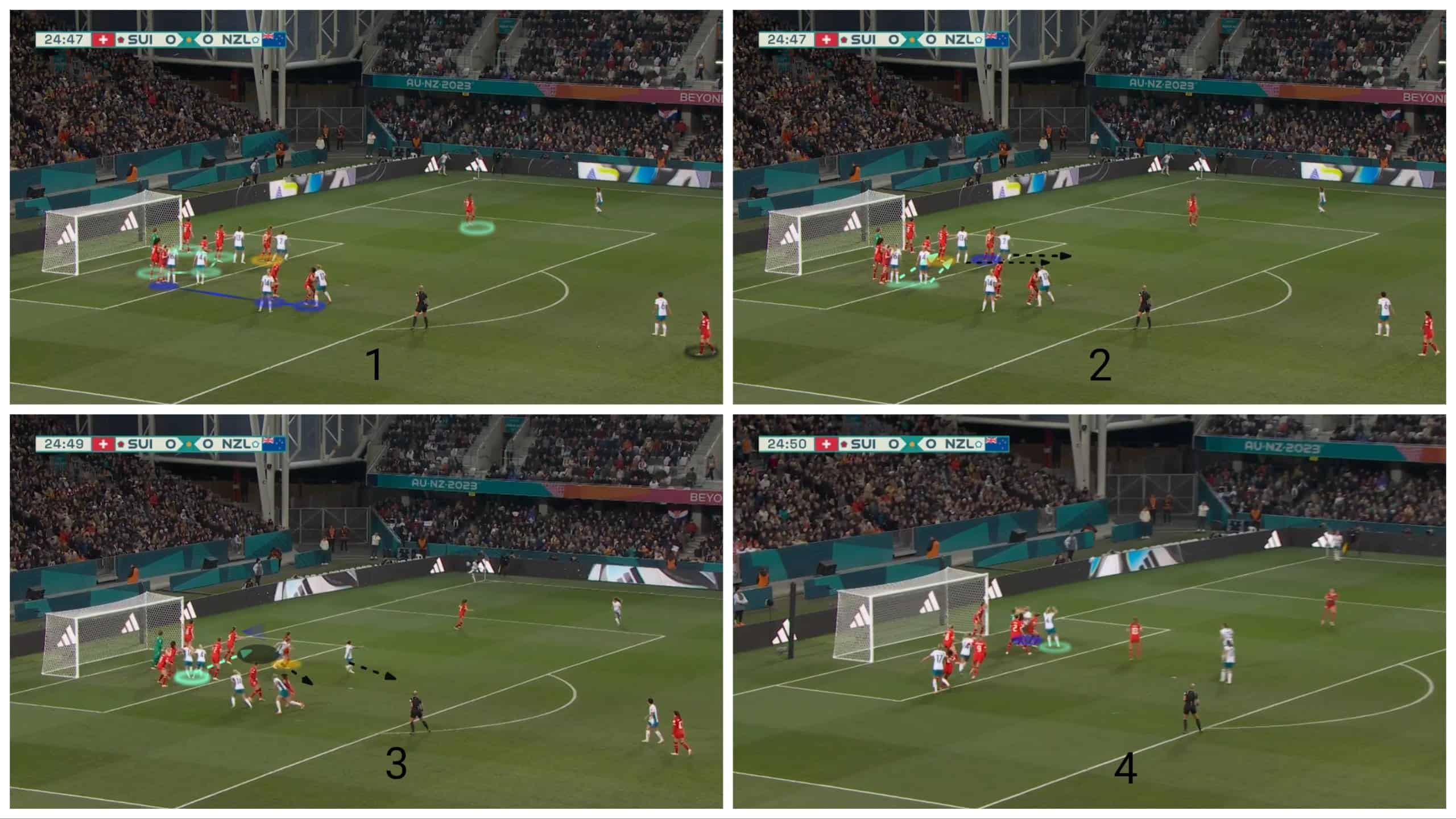
The plan works, but unfortunately, the goalkeeper brilliantly punches the ball at the last moment, as shown below.
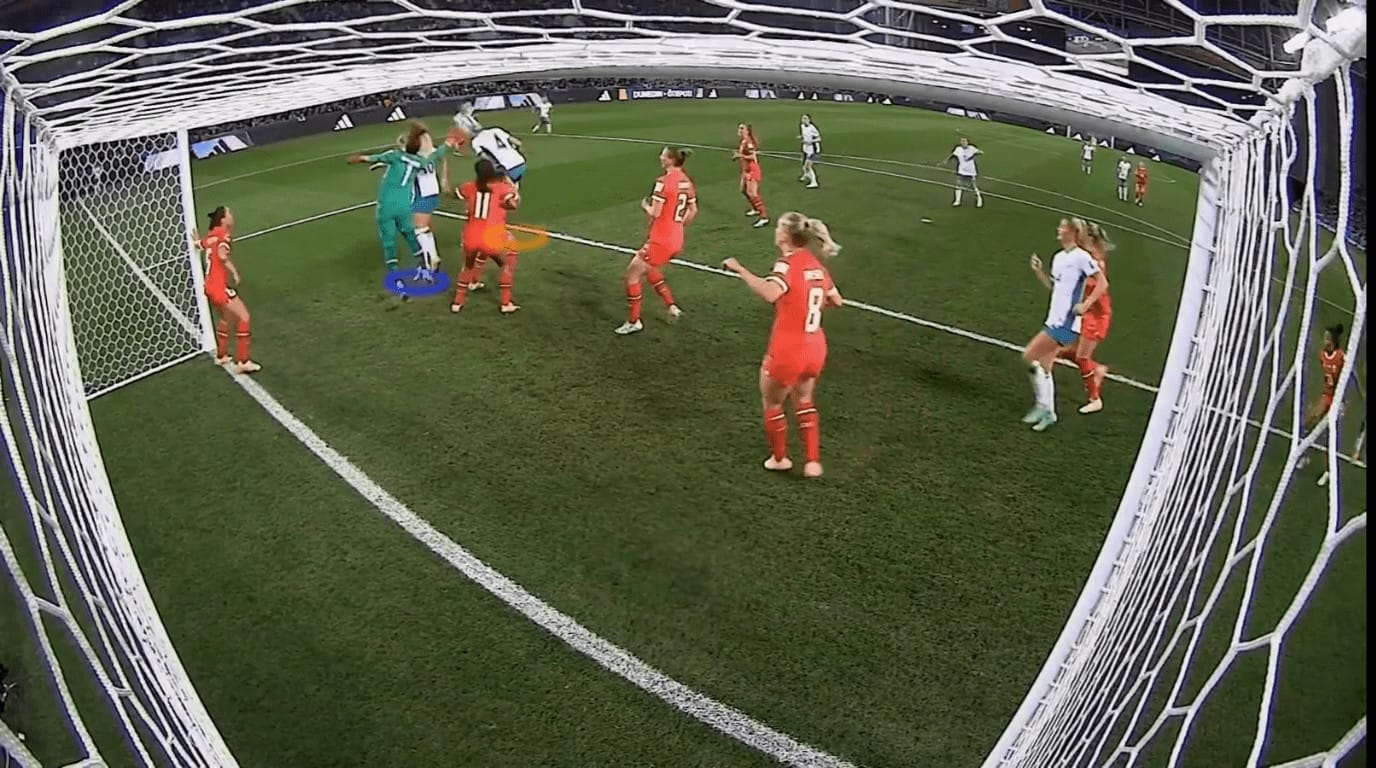
Second-zone fence
In the same match, they also have another brilliant routine which shows that they depend on varied routines.
The defensive scheme of Switzerland is the same as in the previous case, but here New Zealand targets the black area in front of the second zonal line’s player, highlighted in yellow. Three important tricks are essential here, the first one is the position of players on the far post to drag their player markers, making the targeted area empty, and they are patient because they should move only when the taker touches the ball to keep the area empty.
The second thing we should say is the position of the green targeted player facing the taker to be quicker than her marker, who has a problem in orientation because she faces the opponent with her back towards the taker, so she can’t measure the speed and timing for the cross, unlike her marker.
The third and most important trick is that the player, highlighted in yellow, stands in front of the second-zone player to block her preventing her from chasing the ball before getting into the targeted area.
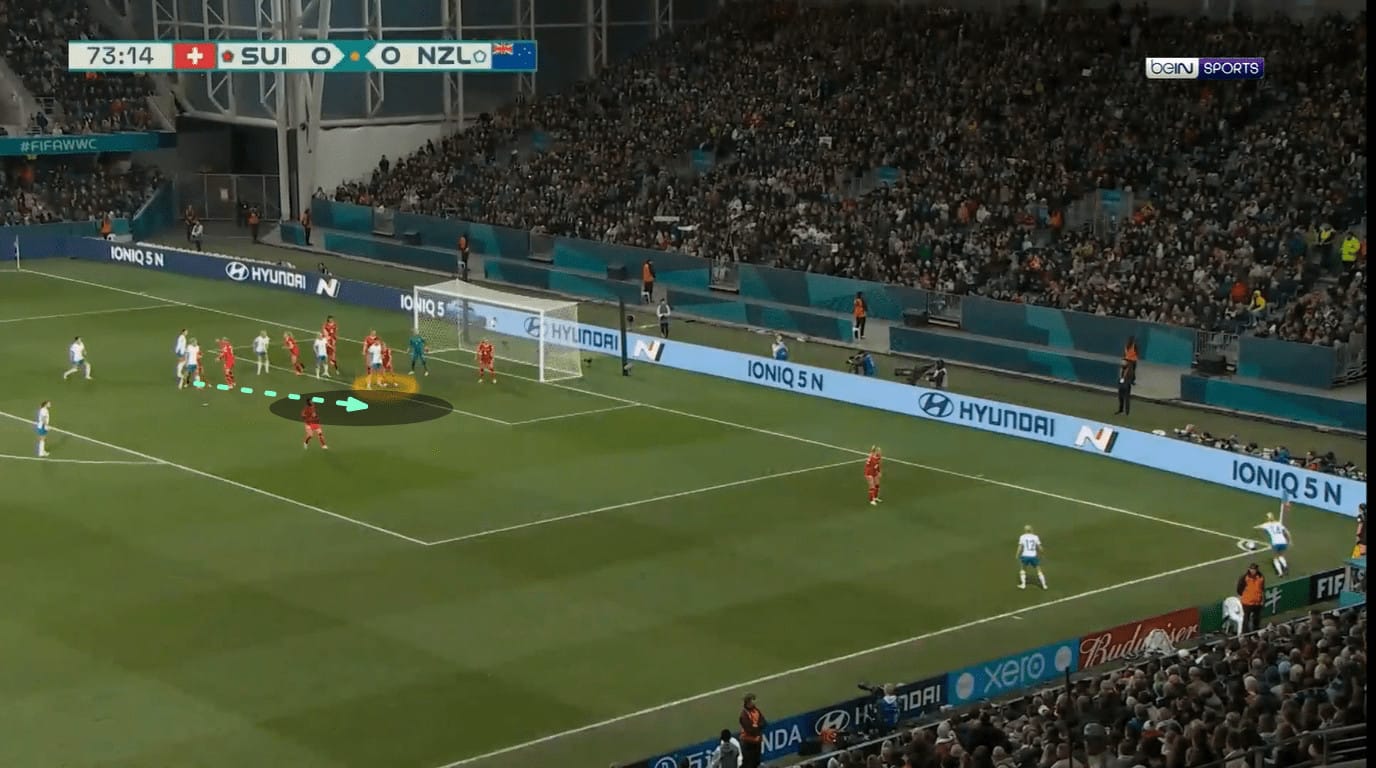
Unluckily again, the cross is shorter than supposed, and also, the yellow player isn’t patient enough, so she decides to get to the ball, trying to play it with her heel, so the real targeted player, in green, can’t get the ball after all those details.
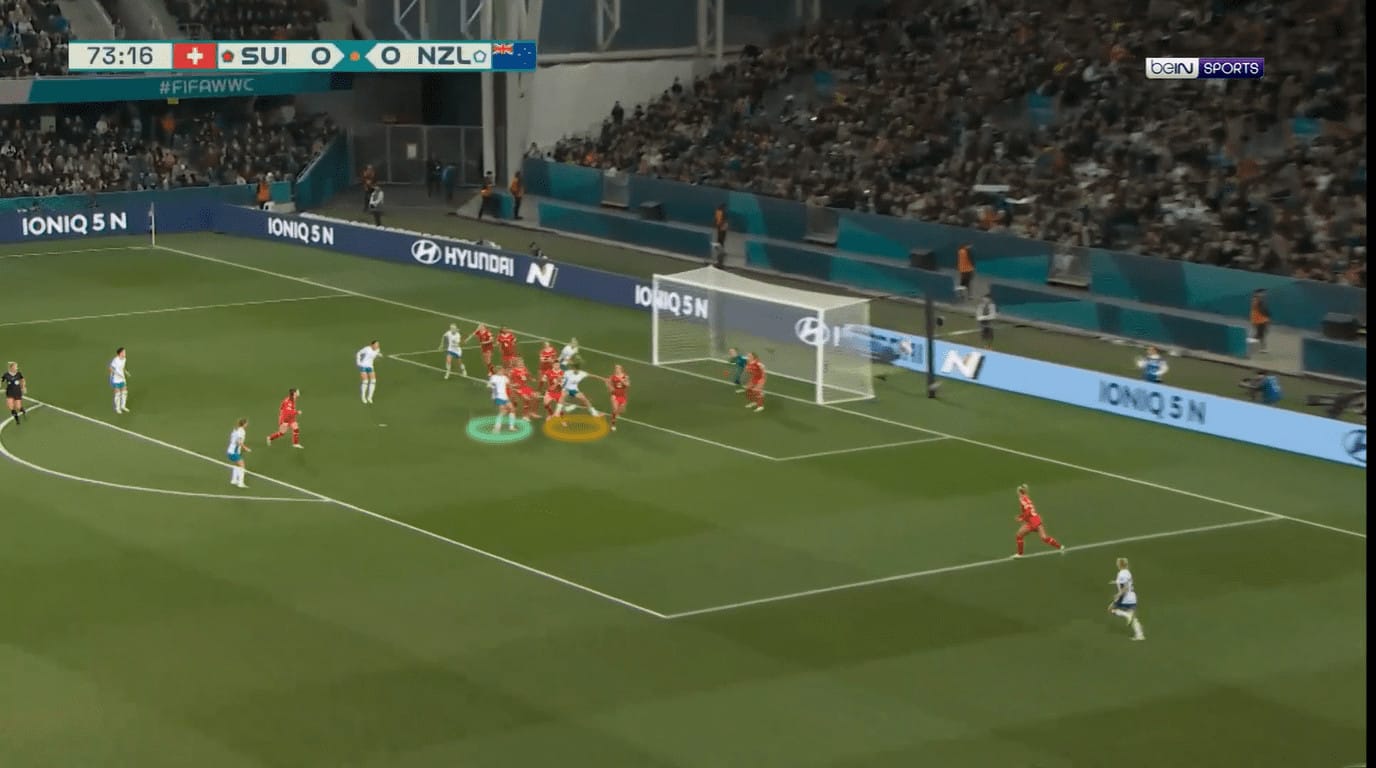
Targeting the far post at indirect free-kicks
As we mentioned above, they aren’t only good at designing corner routines but also at indirect free-kicks.
Against the Philippines, New Zealand carried out a brilliant routine in indirect free-kicks, but, strangely, they were lucky because the final touch didn’t meet the goal again.
Let’s be patient and follow the routine step by step to focus well on all the essential details. In the first photo, New Zealand aim to target the area on the far post, shown in black, by the two players, highlighted in yellow with two arrows to the targeted area, to make the situation a 2v1 situation against the opponent’s last player in the line, highlighted in a green circle on the far post.
In the same photo, the green-highlighted player, with a green arrow, runs toward the near post to get the rebounded ball from the goalkeeper if he punches the ball or to get the headed pass from the targeted players on the far post if the cross were so far that they can’t control the ball well for a good headed shot.
In the second photo, The two targeted players, numbered in yellow, run as the taker moves, highlighted in white, because the Philippines’ system in defending free-kicks is a high line with an early drop, so they don’t fear the off-side trap moving early to the far post.
The second defender of the Philippines in the line, from the far-post side, is highlighted in blue. She has two players of New Zealand’s attackers standing in front of her to attract her attention, preventing him from stepping back to support the last defender to keep the situation a 2v1 situation on the far post. One of the two moves back later to defend the rebound area getting the second ball with a red arrow.
The plan works in the third photo in which the last defender in the line decides to follow the farthest attacker, highlighted in green, which makes the second targeted attacker, with a blue arrow, free with the help of the yellow attacker, who attracts the attention of the second defender dragging her more inside. Hence, the distance between the last two defenders is free to be exploited, as shown in the fourth picture, but the headed shot is so weak that the goalkeeper gets the ball, highlighted in green.
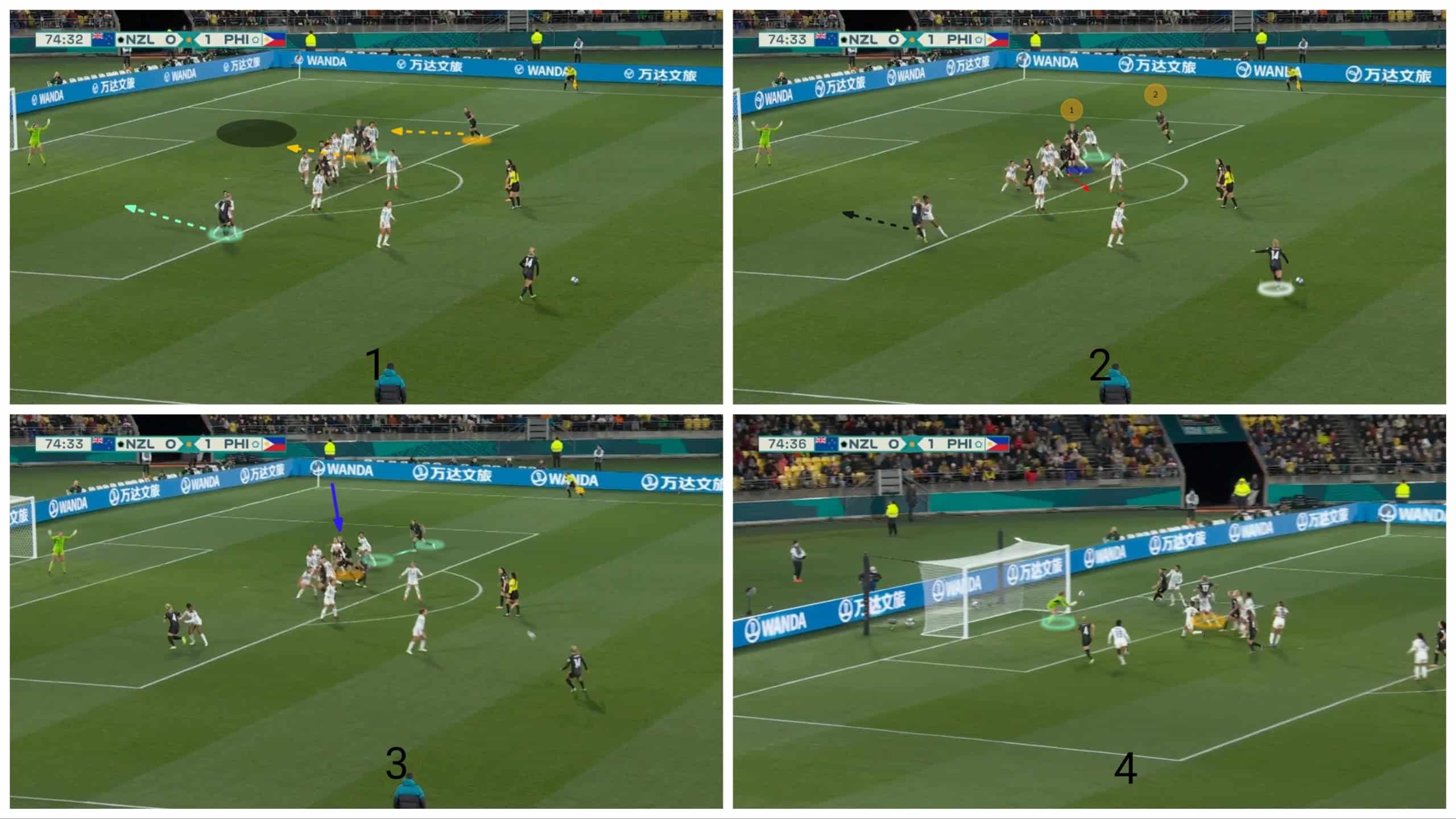
Targeting the area in front of the line in indirect free-kicks
Against Switzerland, they had a good routine in the last minutes to get all or nothing with the goalkeeper participating.
As shown in the first photo, the attackers stand horizontally, making the markers next to the line to empty the area in front of the line to the goalkeeper with the help of three green players standing nearly on the edge of the box to attract the rebound defender away from the goalkeeper.
In the second photo, The defenders try to chase the ball after playing the cross, but they are late because the attackers try to block them, but the goalkeeper’s headed shot is beside the post, as shown in the third and fourth pictures.
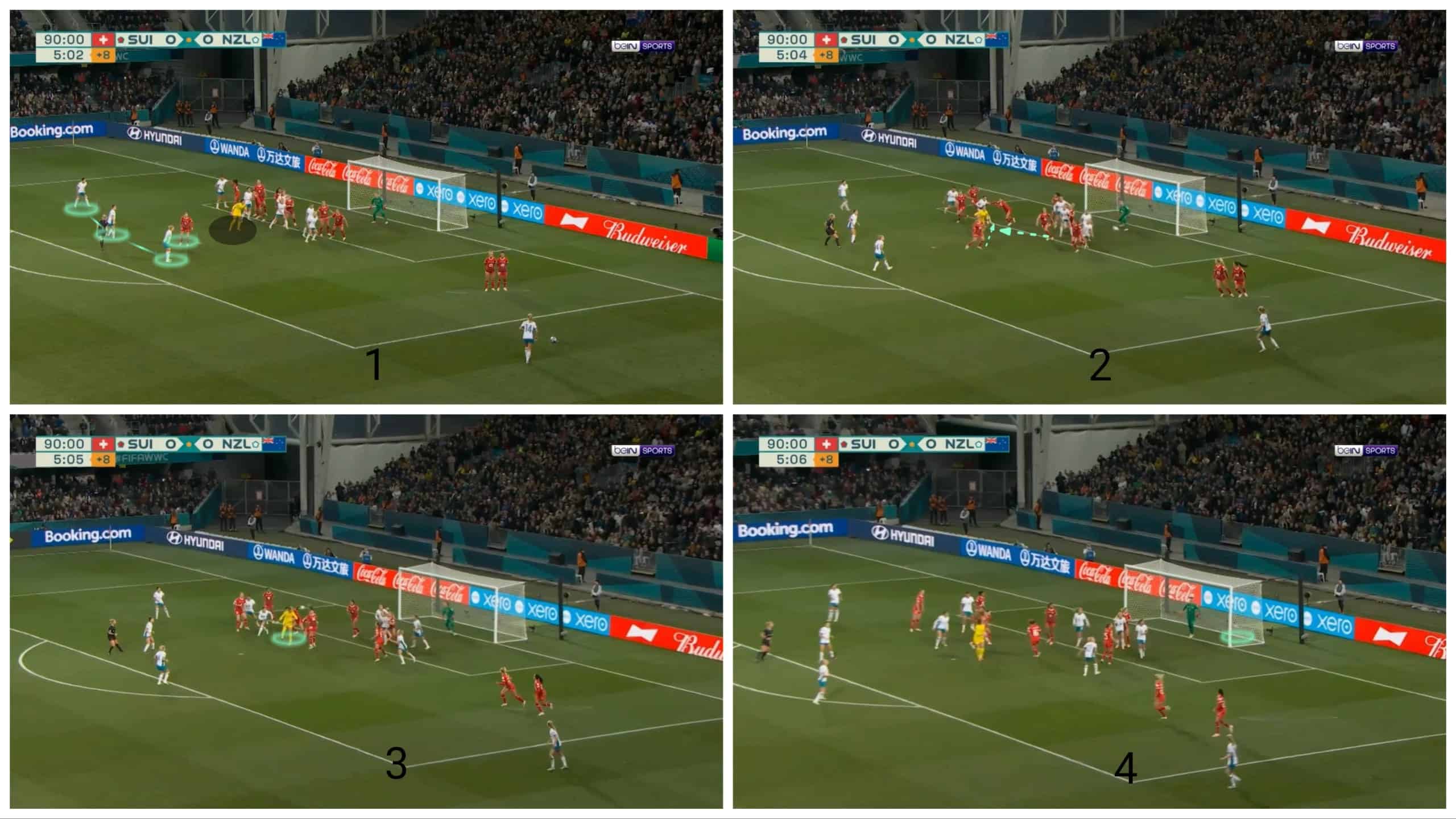
Conclusion
This analysis has shown how set pieces were a good weapon for New Zealand in the Women’s World Cup 2023, but unfortunately, they did not turn into goals. This analysis has also shown the diversity of the New Zealand team in their excellent set-piece routine, whether corners or indirect free kicks.
The host’s exit from the group stage was a big shock for New Zealand, but they must build on the things that they looked good at, and the most important of them are the attacking set pieces.

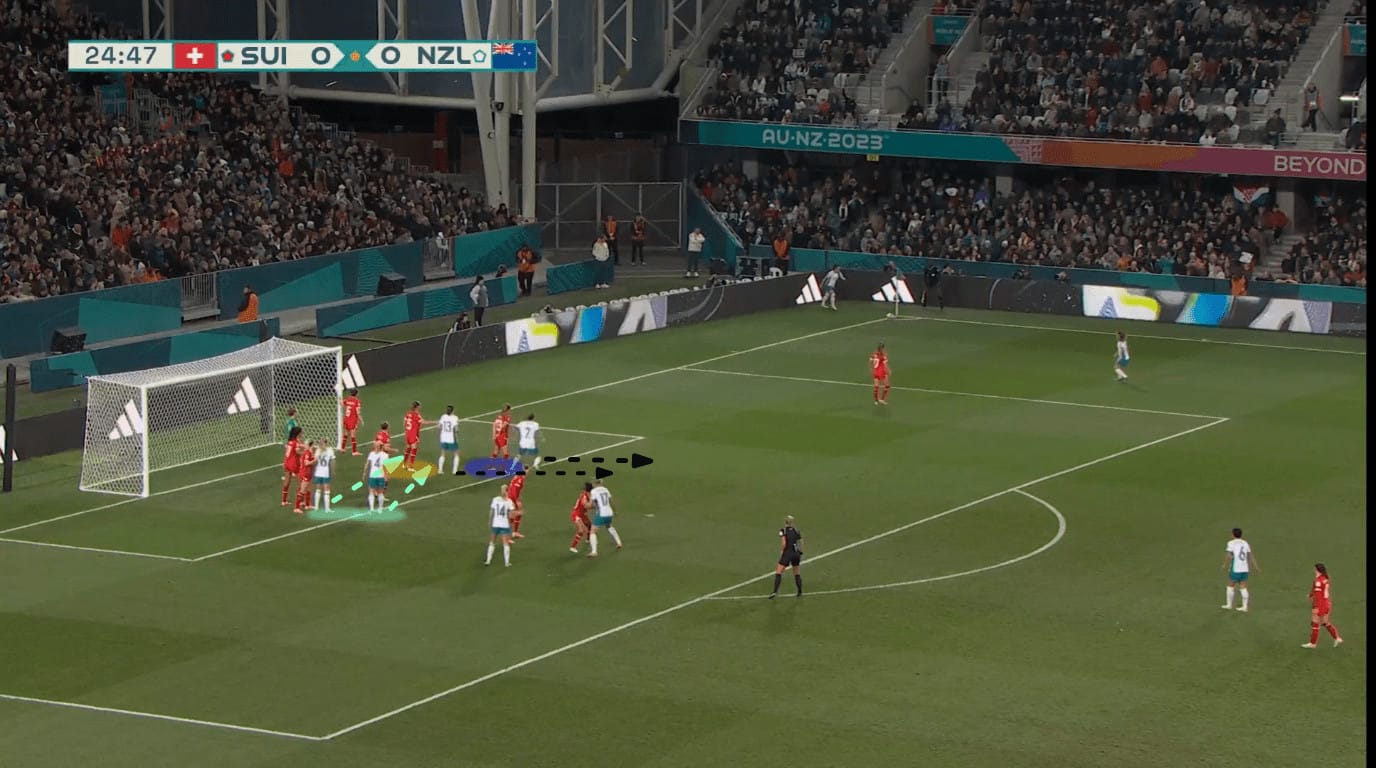




Comments